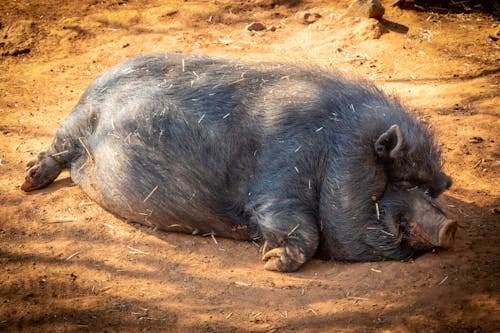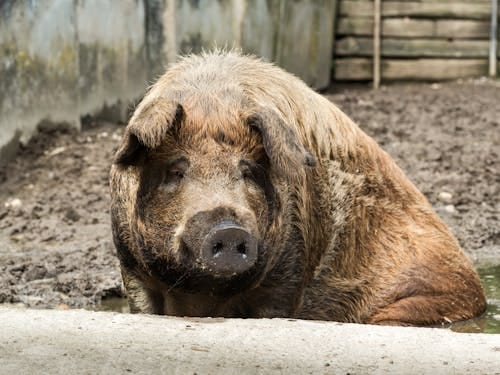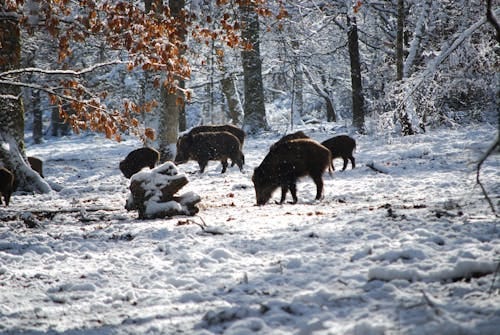Hey there, I’m Gaia, and I am a certified coach, writer, and podcaster. I am the living proof that every life is worth showing and talking about. A window on my existence, through themes such as nature, home, and identity.
Join The Way Home community to gain access to all my writings. Enjoy a mindful, ecocentric, and authentic virtual space, designed to help you believe in yourself and in your talents.
Hey there, friend!
Today’s topic is all about courage—but not the type you might expect.
I dive into a recent article I wrote for the lovely publication Weeds and Wildflowers, titled The Courage of the Pig. Pigs have always held a special place in my heart, and today, I explore why these intelligent, empathetic creatures are an inspiration for living bravely. But not in the way you think.
We often associate courage with staying in difficult situations, toughing it out, or confronting things head-on. But what if true courage, like that of the pig, is sometimes about knowing when to leave? Pigs, with their fight-or-flight instincts, know when it’s time to run, and there's a lesson in that for us too—trusting our instincts and leaving when something no longer serves us.
Join me as I read aloud my piece on The Courage of the Pig (terrifying!), and share some personal reflections on bravery, instinct, and what it means to choose yourself when faced with life’s storms. There’s no guilt in leaving to sit under a tree and wait out the storm.
The Courage of the Pig
originally published on Weeds and Wildflowers, Medium.
Pigs have a special place in my heart. I don’t know what it is, maybe my immediate sympathy for the mistreated. Maybe their curious snouts and the way they walk. It breaks my heart to write this piece because pigs are rather central in the environment of meat consumption. They are wonderful beings, and we are hurting them. But this article won’t be about that. I want to write about the essence of pigs, their demeanor, as free beings. I want to write about the courage of the Pig.
Pigs are as smart as dogs, if not smarter. They can recognize faces, they like to play, and they form structured communities. They possess good long-term memory. They have complex feelings, to the point of developing empathy and changing their behavior based on the emotional state of other pigs. They can recognize themselves in front of a mirror — which is already much more than what I can say about several humans I know.
I used to live in the north of the Netherlands. I ended up in a peripheral neighborhood, close to the woods. There, I found a petting zoo or something similar where a pig named Freddy lived. While I couldn’t properly touch him, I could chat with him and observe him. I love talking to animals. They always respond in their own way. Freddy politely engaged with me with the air of a gentleman.
I remember him quite well. His low center of gravity and the way he would just stare at me peacefully. Once, I even managed to touch his snout. Freddy helped me deepen my love for pigs — no doubts about that.
Energetically, pigs are like big stones. Still, slow, with an air of gravity. Until they are scared, that is. You must know pigs are famous for their fight-or-flight responses. From the immobility of a boulder to the strength and speed of an avalanche, I understand why pigs have been forever associated with the element of earth. Their change in state comes with a heavy weight.
Pigs apply their fight or flight response when they perceive danger. Startled initially, followed by an adrenaline-dependent fight or flight stage. This response is something we often associate with humans, as it is an actual stress response. It is a physiological reaction that happens when something mentally or physically terrifying occurs. Hormones start to flush in our bodies, to prepare it to either stay and face the threat or run away to a safer place.
Pigs even apply a group dynamic to threats, where they give cues to each other to communicate and face danger efficiently. Even in peril, pigs help each other. I wish I could say the same about humans as a ground rule, but once a girl pushed me to reach a hamburger faster than I could, so there’s that.
Most animals apply the flight or fight mechanism, as it is one of the key components that aid survival. Humans are no exception to this, with a key difference. Pigs leave when a situation becomes unbearably threatening to them.
Humans, due to their more developed and complex cognitive system and prefrontal cortex, are able to reason in a more advanced fashion — or so we like to tell ourselves.
While this can have a positive impact in many areas of our silly little human lives, when it comes to threats, we are also impaired by social norms and moral considerations, not to mention our learned experiences. While there are a gazillion examples, the first one I can think of is little girls not reacting to an improper touch because that would be rude. I wrote about this in a different article, if you are in the mood to get angry.
Pigs, on the other hand, rely heavily on their instinctual behaviors when they feel threatened. Let go of the fact that the threats pigs and humans have to face day by day are very different. And that Freddy the pig would have been wildly unbothered by the things that make me want to flee, like small talk, clowns, and doing my taxes. Humans have developed a wide range of irrational fears — all of which are valid examples because of the responses they elicit in our bodies.
The point is that our mind goes into a fight-or-flight response regardless of the nature of the threat. Whether it is a car approaching too fast or an unwanted phone call, the terror we feel is real. But when the danger does not look life-threatening, we stay. We are taught we should deal.
And when we can’t deal, 99.9% of the time, we don’t actually leave, at least not at first. At least not physically. We just internalize. As a result, we freeze and stop interacting with others. We push others away, and we engage in self-sabotaging behaviors. We forget who we are. We let go of things we used to care about. Paralyzing fear. Big fat terror eating our lives away. But we don’t quite leave, not soon enough. Not assertively enough.
Air-bound, neurotic and mind-bound, humans dig deep into their brains instead of walking out. Dark, moldy caves in the depths of our psyche. That’s where we hide from threats. We should learn to avalanche instead. We should learn to wear our weight. To honor our instincts. To respect and explore our own boundaries.
Leaving is a brave act. Leaving means going somewhere else. To leave is an active intention, for your survival, and, by extension, for your happiness. I like to think that pigs don’t leave only due to the explosive mix of cortisol and adrenaline flowing in their veins. I like to think they leave because they are sure there are other, better, things waiting for them and their scruffy noses.
I like to think that when pigs flee, they think of all the things they still want to do. The soothing roots they want to dig up. The flowers they want to use to decorate their nests (pigs actually do that). The smell of rain, and maybe even the earthy scent of their favorite companion.
My goal is to become as brave as a pig. And I’m not talking about the kind of courage that makes you stay. I’m not talking about the kind of courage that makes you freeze in order to deal with unbearable situations. My goal is to embrace the bravery of the pig: to leave without regret or guilt, whenever something doesn’t suit me anymore, and go sit under a tree as the storm approaches.
Thank you for reading my story. If you like my style, check my website and newsletter. There, you will find more stories, videos, and podcast episodes. It’s all about nature, home, and identity. A window on my world where I blend nature writing with mindfulness and well-being.
















Share this post